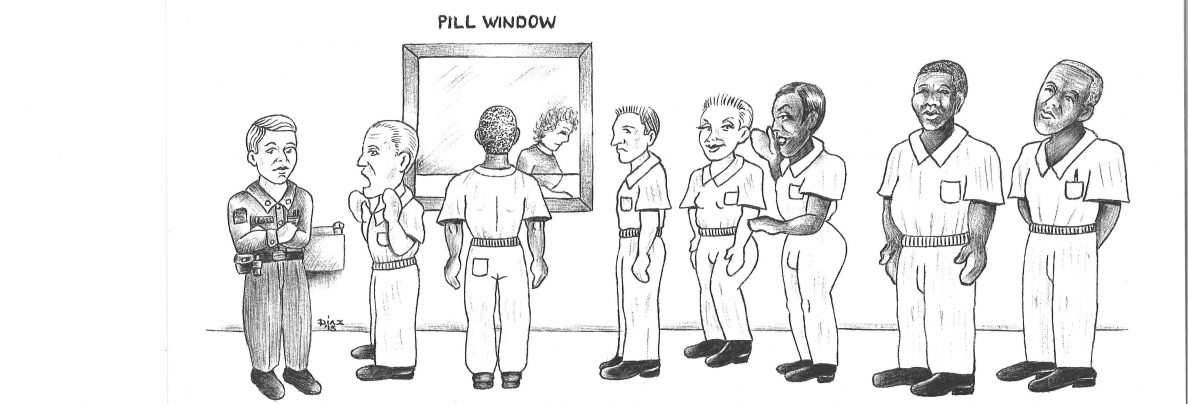By Fatima Malika Shabazz
From PHN Issue 41, Winter 2020
Hello everyone: Since it’s been so long since I’ve written an article for Prison Health News, it makes sense that I introduce myself. My name is Fatima Malika Shabazz. I am a formerly incarcerated Afican American Transwoman. The last time I wrote anything for Prison Health News, it was due to a civil action I filed against the California Department of Corrections. Since that time, I have been released on parole; I have also been heavily involved in advocacy and activism surrounding either reforming or eliminating bad department of corrections policies related to the trans population.
Currently I am a part of a cohort here in California working on changing the policies regarding housing transgender inmates. Under the current policies, individuals housed in any of the 35 California prisons are done so based on their gender assigned at birth. This has proven problematic for many transgender inmates who identify either as trans-male or female regardless of their physical presentation, as well as those who present as non-binary. As a result, there have (over the years) been many incidents of violence against trans inmates, including murders by homophobic and transphobic cell mates, incidents that we believe could have been avoided had the department had policies such as California Senate Bill 132 in place.
If activists are successful in getting our vision of the bill passed, Senate Bill 132 would allow trans people to choose the type of facility (male or female) they want to be housed in based on their gender identity, as opposed to gender identified at birth. This bill (should it pass), comes at a timely moment, as there has been an increase in violence against incarcerated trans women. The violence has escalated especially since former Department of Corrections Secretary Scott Kernan negotiated away the safety of LGBTQ inmates by eliminating Sensitive Needs Yards. These were housing units in California prisons that traditionally held people who were in danger of facing violence in general population. Examples included informants (“snitches”), LGBT people, and people who were at risk of sexual assault.
The vision for this (at least from my perspective) is that trans people would be able to live in safer, more inclusive spaces that correlate more accurately to their personal gender identities. It must be noted, however, that this is not intended to be a hard and fast written in stone type policy—it is, in fact, meant to provide an option. Point of fact is that some trans women might rather be housed in men’s facilities, due to their personal dating preferences. It should also be noted that as a matter of policy, romantic relationships between inmates and/or staff are illegal, as is sex, consensual or otherwise. However, if trans women want to continue to be housed in men’s prisons as a matter of preference, they would continue to have that option, as would trans men.
The long-term goal is to ensure that trans people would know that the option exists for them to utilize at any point while serving their sentences, and secondly that a safer option is at their disposal, because it is an actionable policy. It is the desire of those working on the language of the bill that having this policy in place and ensuring that it is actionable would reduce the possibility of violence being committed against them, including the high possibility of being housed against their will with someone with a history of homophobic or transphobic violence. The bill would reduce the possibility of transgender people being murdered in prison simply for being trans.
As a trans woman, I am acutely aware of these elements of violence. I personally, however, cannot attest to what situation exists for trans men who may desire utilizing this option in the same way. It may very well be plausible that trans men would feel safer remaining in women’s facilities, which would be their prerogative. It is the concern of the cohort that no incarcerated trans person be placed in a situation that would make them feel less safe. With these concerns in mind, we are working very carefully to make sure the language of this bill reflects the concerns of all parties impacted by this bill.
Please be aware that this is still a monumental work in progress, but as we progress, I will duly keep everyone informed. And if you are considering doing something like this in your state, I’m of the opinion that you should. All trans people are entitled to live with respect and dignity, and if this will provide a modicum of that, why not pursue making it happen?

